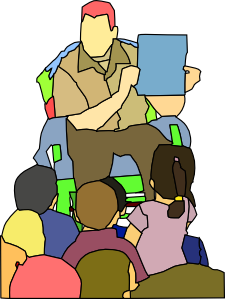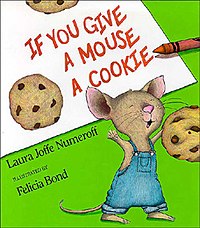Source: http://www.epikardia.com/images/kindergarten%20girl%20reading.jpg
The list of books for infants and toddlers have been done. It is time for a very short list for preschoolers and kindergarteners! These books are the most favourite books for this age group of all time.
Abiyoyo - by Pete Seeger
Alexander and the Terrible, Horrible, No Good, Very Bad Day - by Judith Viorst
Bedtime for Frances - by Russell Hoban
Blueberries for Sal - Robert McCloskey
Bread and Jam for Frances - by Russell Hoban
Brown Bear, Brown Bear, What do you see? - by Bill Martin, Jr.
Can I Keep Him? - by Steven Kellogg
The Cat in the Hat - by Dr. Seuss
Changes, Changes - by Pat Hutchins
Chicka Chicka Boom Boom - by Bill Martin, Jr.
Chicken Little - by Steven Kellogg
Corduroy - by Don Freeman
The Doorbell Rang - by Pat Hutchins
The First Snowfall - by Anne and Harlow Rockwell
Flossie and the Fox - by Patricia McKissack
Flying - by Donald Crews
Frog on His Own - by Mercer Mayer
Goldilocks and the Three Bears - by Jan Brett
Green Eggs and Ham - by Dr. Seuss
Hello Kangaroo - by Nan Bodsworth
Henny Penny - by Paul Galdone (illustrator)
I Don't Want to go to School - by Christine Harris
If You Give a Mouse a Cookie - by Laura Numeroff
If You Give a Pig a Pancake - by Laura Numeroff
Imogene's Antlers - by David Small
Island of the Skog - by Steven Kellogg
It's Pumpkin Time - by Zoe Hall
Jamberry - by Bruce Degen
The Judge - by Margot and Harve Zemach
Just like you and Me - by David Miller
Koala Lou - by Mem Fox
Leo the Late Bloomer - by Robert Kraus
A Letter to Amy - by Ezra Jack Keats
Look Book - by Tana Hoban
Make Way for Ducklings - by Robert McCloskey
The Mitten - by Jan Brett
Mouse Paint - by E.S. Walsh
The Napping House - by Audrey and Dan Wood
Over in the Meadow - by Ezra Jack Keats
Owl Moon - by Jane Yolen
Pancakes for Breakfast - by Tomie DePaola
Picasso the Green Tree Frog - by Amanda Graham
Rosie's Walk - by Pat Hutchins
Silly Sally - by Audrey Wood
The Snowy Day - by Ezra Jack Keats
Swimmy - by Leo Lionni
Titch - by Pat Hutchins
Tough Boris - by Mem Fox
The Very Busy Caterpillar - by Eric Carle
Wacky Wednesday - by Theo Le Sieg
Whistle for Willie - by Ezra Jack Keats
Zoom - by Istvan Banyai
Please remember this is a VERY short list of books. There are ton of others depending on the interest of your student(s) and child(ren).


















































